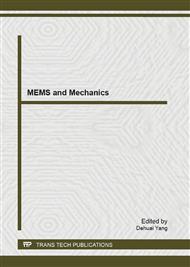[1]
Amyotte, P. R. et al., 2003. An investigation of iron sulphide dust minimum ignition temperatures. Journal of Hazardous Materials 97(1–3), 1–9.
DOI: 10.1016/s0304-3894(02)00220-0
Google Scholar
[2]
Anderson, I. E., Foley, J. C., 2001. Determining the role of surfaces and interfaces in the powder metallurgy processing of aluminum alloy powders. Surface and Interface Analysis, 31, 599–608.
DOI: 10.1002/sia.1087
Google Scholar
[3]
Cashdollar, K. L., 2000. Overview of dust explosibility characteristics.Journal of Loss Prevention in the Process Industries 13, 183–199.
DOI: 10.1016/s0950-4230(99)00039-x
Google Scholar
[4]
Jacobson, M. et al., 1965. Explosibility of metal powders. Report of investigation 6516. Bureau of Mines: U.S. Department of the Interior.
Google Scholar
[5]
Jun, S., 2003. Mathematical Statistics. Springer Science + Business Media.
Google Scholar
[6]
S. Radandt et al., 2001. Cornstarch explosion experiments and modeling in vessels ranged by height/diameter ratios. Journal of Loss Prevention in the Process Industries 14, 495–502.
DOI: 10.1016/s0950-4230(01)00044-4
Google Scholar
[7]
Sun, J. et al., 2003. Concentration profile of particles across a flame propagating through an iron particle cloud. Combustion and Flame 134 (4), 381–387.
DOI: 10.1016/s0010-2180(03)00137-8
Google Scholar
[8]
Zhihua, C., Baochun, F., 2005. Flame propagation through aluminum particle cloud in acombustion tube. Journal of Loss Prevention in the Process Industries 18 (1), 13–19.
DOI: 10.1016/j.jlp.2004.10.001
Google Scholar
[9]
K.L. Cashdollar, Coal dust explosibility, J Loss Prev. Process 9 (1996) 65 – 76.
Google Scholar
[10]
Cashdollar, K. L. (2000). Overview of dust explosibility characteristics. Journal of Loss Prevention in the Process Industries, 13(3–5), 183–199.
DOI: 10.1016/s0950-4230(99)00039-x
Google Scholar
[11]
Li, H., Gao, C., Su, D., & Huang, W. X. (20 09). Experimental research on bituminous coal dust explosibility. Journal of Sichuan University (Engineering Science Edition), 41(6), 79–83.
Google Scholar


